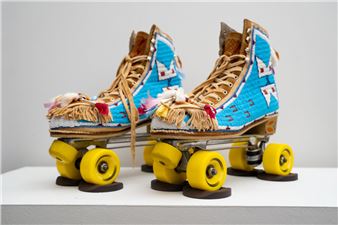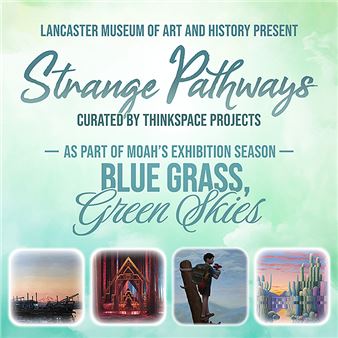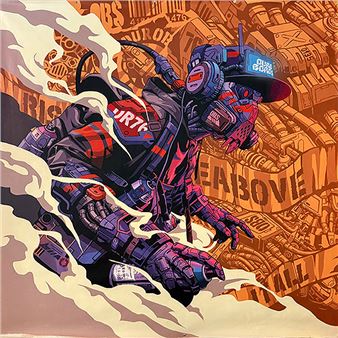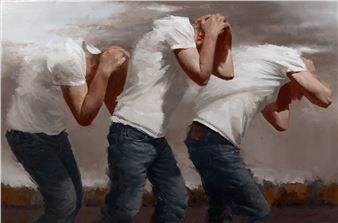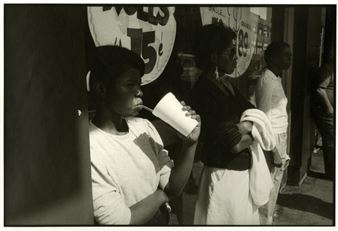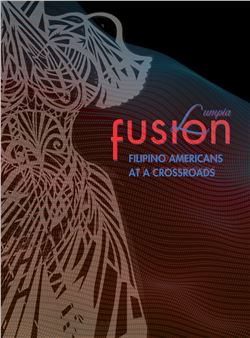Figure It Out: Eccentric Visions in Figurative Art
Figure It Out: Eccentric Visions in Figurative Art brings together five artists from the Midwest who make distinctly idiosyncratic figurative work. Each of them presents a unique vision that feels both alien and familiar; one that is grounded in personal emotions but is also infused with popular culture, humor and shared experiences. They offer personal mythologies and introspective processes that are made accessible through a language of cartoon imagery, patterns and bright colors. Justin Henry MillerÔÇÖs paintings and drawings are influenced by his experiences growing up on a horse farm, where he witnessed the hyper-manipulation of nature for human use.
He believes that what initially begins as harmless bio-mimicry typically devolves into dystopia. Cloning, transgenic breeding, surrogate mothering, surgical augmentation and food modification are just a handful of the processes that have sparked his imagination. He imagines that these experiments have gone awry and tries to create a world where the byproducts resist expiration. MillerÔÇÖs biomorphic beings fluctuate between success and failure in their own world of desolation. However, his protagonists evoke a funniness or sadness that makes them relatable. Alison McKenzieÔÇÖs work explores personal emotion and feminist themes with a sense of humor and whimsy, using bright, playful color combinations. Utilizing her skills as a designer at a paper retailer, she creates collages of female figures set into lush landscapes.
She loves the tactile, playful and graphic sense that paper lends to a piece and the saturated color it provides. She is interested in exploring the intersection of what is traditionally feminine in color, material, and theme, with what can be seen as aggressive, weird, surreal and ÔÇ£unladylikeÔÇØ. She creates scenes that are mysterious and provocative with a palette and craft technique that seems accessible and familiar. The characters in A.J. AinscoughÔÇÖs cartoony and psychedelic paintings serve as avatars for the artist himself. He uses them to reenact his experiences or to perform fictitious ones. His expressive works also explore the chaotic duality of good vs. evil that is within us all. His thick, painterly brushstrokes infuse his subjects with a distinct physicality and his characters display exaggerated, sometimes even grotesque, proportions as they drink, smoke, frolic and dream. We may not know their names or what they have been through, but it is easy to see ourselves in them. Patrick WilkinsÔÇÖ work is about finding humor in struggle.
The cartoon imagery he uses simultaneously undermines and highlights the mental, emotional, and physical potshots that we are expected to endure every day. Despite this regular bombardment, it is not socially acceptable to show weaknesses as an adult in contemporary society. Wilkins reaches back to images of childhood, our last acceptable period of vulnerability, in an attempt to lend some humanity and humor to less than humane situations. C.J. PyleÔÇÖs unique style of ÔÇ£knottedÔÇØ mark-making, which he often applies to LP sleeves using a ballpoint pen, developed in his downtime as a touring drummer. Though he has said that his life makes it into his art, his drawings remain steadfastly imaginative and are guided more by intuition, exploration and process than by personal narrative. Self-taught, Pyle has developed an eccentric style that perpetually pushes creative boundaries, as well as a mysterious world that unfolds according to its own internal logic.
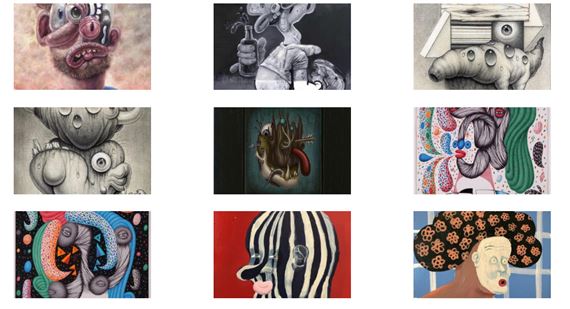
Recommended for you
Figure It Out: Eccentric Visions in Figurative Art brings together five artists from the Midwest who make distinctly idiosyncratic figurative work. Each of them presents a unique vision that feels both alien and familiar; one that is grounded in personal emotions but is also infused with popular culture, humor and shared experiences. They offer personal mythologies and introspective processes that are made accessible through a language of cartoon imagery, patterns and bright colors. Justin Henry MillerÔÇÖs paintings and drawings are influenced by his experiences growing up on a horse farm, where he witnessed the hyper-manipulation of nature for human use.
He believes that what initially begins as harmless bio-mimicry typically devolves into dystopia. Cloning, transgenic breeding, surrogate mothering, surgical augmentation and food modification are just a handful of the processes that have sparked his imagination. He imagines that these experiments have gone awry and tries to create a world where the byproducts resist expiration. MillerÔÇÖs biomorphic beings fluctuate between success and failure in their own world of desolation. However, his protagonists evoke a funniness or sadness that makes them relatable. Alison McKenzieÔÇÖs work explores personal emotion and feminist themes with a sense of humor and whimsy, using bright, playful color combinations. Utilizing her skills as a designer at a paper retailer, she creates collages of female figures set into lush landscapes.
She loves the tactile, playful and graphic sense that paper lends to a piece and the saturated color it provides. She is interested in exploring the intersection of what is traditionally feminine in color, material, and theme, with what can be seen as aggressive, weird, surreal and ÔÇ£unladylikeÔÇØ. She creates scenes that are mysterious and provocative with a palette and craft technique that seems accessible and familiar. The characters in A.J. AinscoughÔÇÖs cartoony and psychedelic paintings serve as avatars for the artist himself. He uses them to reenact his experiences or to perform fictitious ones. His expressive works also explore the chaotic duality of good vs. evil that is within us all. His thick, painterly brushstrokes infuse his subjects with a distinct physicality and his characters display exaggerated, sometimes even grotesque, proportions as they drink, smoke, frolic and dream. We may not know their names or what they have been through, but it is easy to see ourselves in them. Patrick WilkinsÔÇÖ work is about finding humor in struggle.
The cartoon imagery he uses simultaneously undermines and highlights the mental, emotional, and physical potshots that we are expected to endure every day. Despite this regular bombardment, it is not socially acceptable to show weaknesses as an adult in contemporary society. Wilkins reaches back to images of childhood, our last acceptable period of vulnerability, in an attempt to lend some humanity and humor to less than humane situations. C.J. PyleÔÇÖs unique style of ÔÇ£knottedÔÇØ mark-making, which he often applies to LP sleeves using a ballpoint pen, developed in his downtime as a touring drummer. Though he has said that his life makes it into his art, his drawings remain steadfastly imaginative and are guided more by intuition, exploration and process than by personal narrative. Self-taught, Pyle has developed an eccentric style that perpetually pushes creative boundaries, as well as a mysterious world that unfolds according to its own internal logic.

 ARTISTS
ARTISTS







